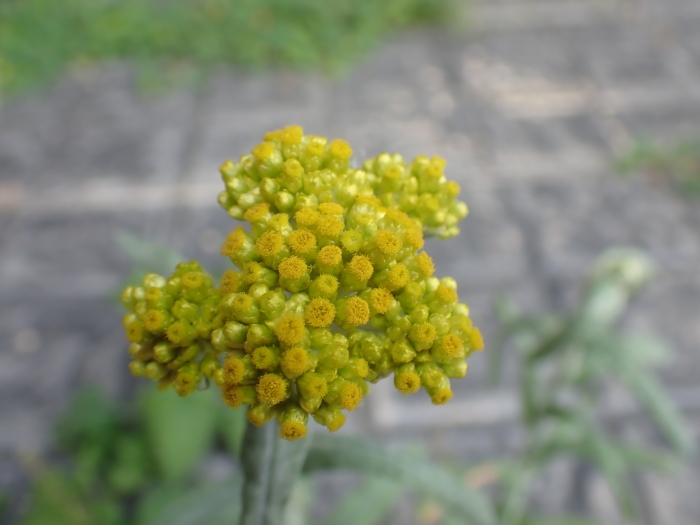Jersey Cudweed
(Pseudognaphalium affine)
Jersey Cudweed (Pseudognaphalium affine)
/
/

© luluchouette
CC BY 4.0
Image By:
© luluchouette
Recorded By:
Copyright:
CC BY 4.0
Copyright Notice:
Photo by: © luluchouette | License Type: CC BY 4.0 | License URL: http://creativecommons.org/licenses/by/4.0/ | Uploader: luluchouette | Publisher: iNaturalist |

























Estimated Native Range
Summary
Gnaphalium affine, also known as Jersey Cudweed, is a biennial herb native to a variety of habitats including grasslands, roadsides, and disturbed areas across East Asia, Southeast Asia, South Asia, the Transcaucasus, and Anatolia. It typically grows to a height of 10-30 cm and has a rosette of basal leaves with erect flowering stems. The plant produces small, white to pale pink flower heads that are grouped in clusters, blooming from summer to early autumn. The flowers are not particularly showy, but they do attract pollinators such as bees and butterflies.
Jersey Cudweed is valued for its medicinal properties in traditional medicine, particularly in East Asian cultures. It is used for its ease of maintenance and is often found in herbal gardens. In cultivation, it prefers full sun to part shade, well-drained soil, and moderate watering. It can be used as ground cover or in border plantings due to its low-growing habit. However, it is important to be cautious with this plant as Pseudognaphalium affine is potentially invasive in some regions. Before planting it outside of its native range, it is crucial to check local regulations to ensure it is not considered invasive in the area.CC BY-SA 4.0
Jersey Cudweed is valued for its medicinal properties in traditional medicine, particularly in East Asian cultures. It is used for its ease of maintenance and is often found in herbal gardens. In cultivation, it prefers full sun to part shade, well-drained soil, and moderate watering. It can be used as ground cover or in border plantings due to its low-growing habit. However, it is important to be cautious with this plant as Pseudognaphalium affine is potentially invasive in some regions. Before planting it outside of its native range, it is crucial to check local regulations to ensure it is not considered invasive in the area.CC BY-SA 4.0
Plant Description
- Plant Type: Herb
- Height: 1-3 feet
- Width: 1-2 feet
- Growth Rate: Rapid
- Flower Color: White, Yellow
- Flowering Season: Summer, Fall
- Leaf Retention: Evergreen
Growth Requirements
- Sun: Full Sun
- Water: Low, Medium
- Drainage: Medium, Fast
Common Uses
Bird Garden, Butterfly Garden, Drought Tolerant, Low Maintenance
Natural Habitat
Variety of habitats including grasslands, roadsides, and disturbed areas across East Asia, Southeast Asia, South Asia, the Transcaucasus, and Anatolia
Other Names
Common Names: False Cudweed, Cottonbatting Plant
Scientific Names: , Pseudognaphalium affine, Anaphalis subdecurrens var. lutea, Gnaphalium affine, Gnaphalium affine var. affine, Gnaphalium arenarium, Gnaphalium confusum, Gnaphalium javanicum, Gnaphalium javanicum, Gnaphalium javanicum
GBIF Accepted Name: